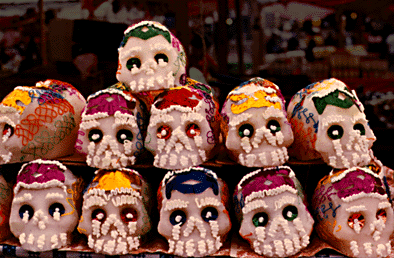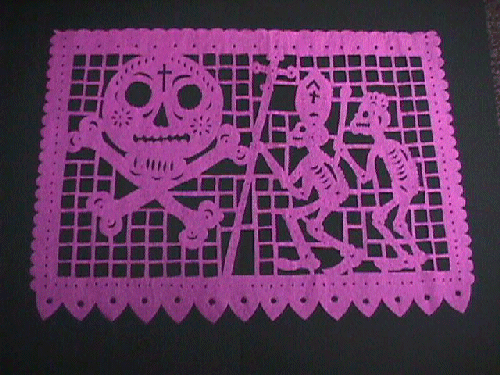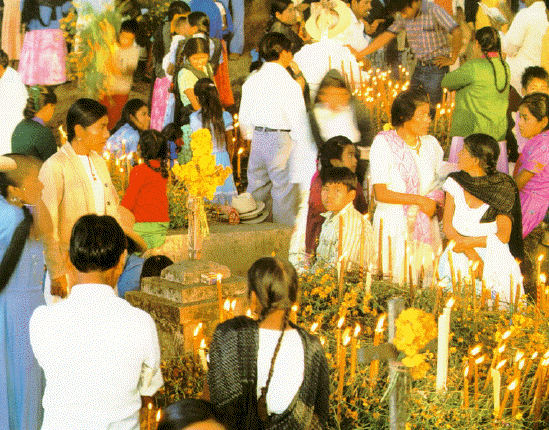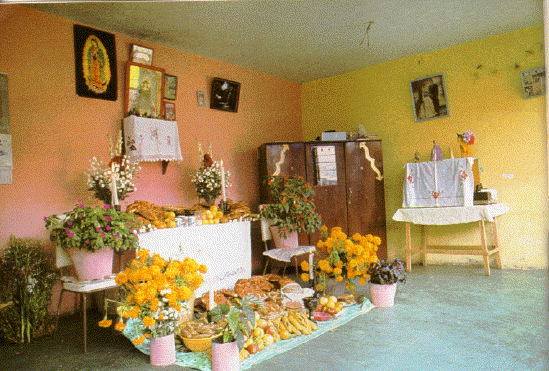






![]() CALAVERAS EVERYWHERE
CALAVERAS EVERYWHERE![]()





To build an altar in the home, decide first if you want the altar to honor one person or a group of family members. Once you choose, the altar will need a focal point, usually a photograph, but it can also be an object that represents the deceased person. It can be a trophy, a favorite book, a tool from his profession, or a work of art. The central piece is the most important because the ofrenda will be built around it.
